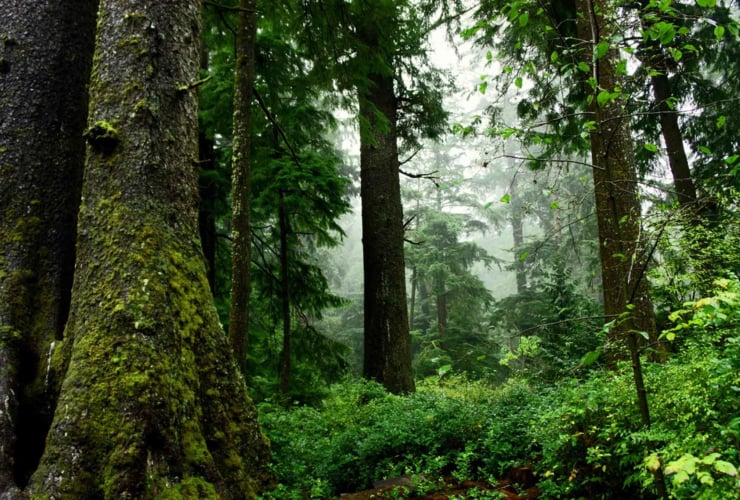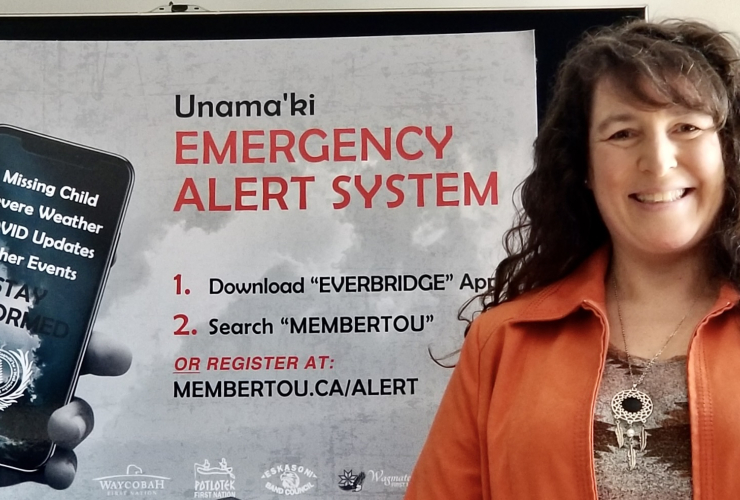Support journalism that lights the way through the climate crisis
Athabasca Chipewyan First Nation Chief Allan Adam is telling the Alberta Energy Regulator to “prepare for court” after a third-party report commissioned by the regulator found it responded responsibly to oilsands tailings pond spill and seepage incidents at Imperial Oil’s Kearl site. He told the regulator on Sept. 26 that he does not accept the report.
“They know we're coming. They better be prepared,” Adam told Canada’s National Observer in a phone interview on Sept. 27.
“You know the industry should take note of this, that this is a direct attack to our treaty right and we will not stand for it,” Adam continued.
The report, prepared by Deloitte, confirmed “protecting public safety and the environment was paramount in our peoples' actions,” said AER board chair David Goldie in a news release.
The Kearl incidents made international headlines earlier this year when it came to light that apart from one email, downstream communities, including First Nations, were left in the dark for nine months while Imperial Oil’s tailings were seeping offsite.
The report found the provincial energy regulator complied with existing policies, but noted the Kearl incidents “highlighted the need for more detailed processes and clearer communication protocols with Indigenous People and external stakeholders,” as well as recommended clearer definitions for certain terms, like “incident” and “emergency.”
It’s not surprising the AER “has absolved itself of any responsibility for failing to prevent or communicate the incident to downstream communities,” reads the Athabasca Chipewyan First Nation’s official statement in response to the report.
“We have no confidence in the AER or the government of Alberta to investigate this incident or prevent another one from happening,” it reads.
In early February, Imperial Oil reported a spill of 5.3 million litres from one of its tailings storage ponds on the Kearl site, about 70 kilometres north of Fort McMurray. It was one of the largest tailings spills in Alberta’s history. When the energy regulator issued an environmental protection order on Feb. 6, communities downstream of the Kearl site, the federal government and the Northwest Territories learned for the first time that Imperial had also detected tailings seepage at multiple locations on the Kearl site in May 2022.
There was widespread outrage from Indigenous leaders at the delay and MPs eventually questioned Imperial Oil executives and the Alberta Energy Regulator about why it took nine months for them to notify communities and governments, despite a variety of intergovernmental and impact benefit agreements that require swift communication.
The AER board of directors commissioned Deloitte to conduct the third-party review and examine the regulator’s response, notification and communication protocols to identify any issues or gaps in how it handled the Kearl seepage and spill, as well as provide recommendations.
The report found some sections of the AER's policies, standards, procedures and manuals for emergency response, incident reporting and investigation are “dated” and not in line with Deloitte’s crisis and incident response framework or the expectations of external stakeholders interviewed.
One page of the 14-page report contains a summary of “Perspectives from Indigenous Peoples.” Deloitte interviewed representatives from the Mikisew Cree First Nation, Fort Chipewyan Métis Nation, Willow Lake Métis Nation, Fort McMurray 468 First Nation, Athabasca Chipewyan First Nation, Fort McKay First Nation, McMurray Métis Local 1935, and Fort McKay First Nation.
“All respondents expressed significant concern with the gap in communications around the event, especially in the context of one email to a single point of contact to the communities in May 2022 with no additional follow-up until the [environmental protection order] was issued in February 2023,” reads the report. This meant that for nine months, no additional communications were provided to regional Indigenous and First Nations communities.
The Athabasca Chipewyan First Nation wants the federal government to exercise its authority by conducting a full geotechnical audit of oilsands tailings facilities. The release says it doesn’t believe the Kearl seepage and spill were isolated incidents nor does it have faith the AER would inform the public if another occurred.
Being offered a seat at the table by the AER is “not going to be good enough because they're not willing to listen to us,” said Adam.
It also called on the federal government to conduct cumulative health studies on residents in the Peace-Athabasca Delta to determine the long-term health impacts of industry. Indigenous communities and health groups have been calling for these kinds of studies for years. Already, evidence shows tailings are leaching into groundwater.
Environment and Climate Change Canada enforcement officers are currently investigating Imperial Oil to determine whether the Kearl leaks and seepage broke federal fisheries law that prohibits the deposit of harmful substances — like the toxic chemicals that make up oilsands tailings — into water frequented by fish or any place where the substance could feasibly enter fish-bearing waters.
The Kearl situation highlights the looming threat posed by more than 1.4 trillion litres of oilsands tailings — a mixture containing arsenic, leftover bitumen, toxic naphthenic acids, silt and clay — in the Athabasca oilsands.
These massive, human-made lakes perched near the Athabasca River are set to hit capacity in 2025. At that point, the tailings will be treated and dumped into the river, in accordance with federal regulations still being developed. However, Environment and Climate Change Canada says dumping treated tailings is just “one of the options” under consideration.
Tailings ponds will keep growing as long as oilsands companies keep producing.
“It is appalling for the regulator to take no responsibility for such an egregious failure,” said Aliénor Rougeot, climate and energy program manager at Environmental Defence Canada, in a press release. Rougeot echoed the ACFN’s claim that the AER is a captured regulator and urged the federal government to act.
Natasha Bulowski / Local Journalism Initiative / Canada’s National Observer
Updates and corrections
| Corrections policyThis story was updated shortly after publication to include additional comments from ACFN Chief Allan Adam.
The Deloitte report makes no
The Deloitte report makes no mention of how to clean tailings spills that leak arsenic and other toxins for NINE MONTHS into downstream river beds.
Imperial Oil was quoted after their terrible breach of trust became public, that they had Cleaned the spill.
How? Did the remove the river bed fir hundreds of kilometres?
What would Imperial’s CEO and Directors expect if a spill happened in their neighbourhoods?
On the Onondaga Escarpment in Niagara Region, mining (quarries) occurs for limestone to build roads & make cement. Citizens are fighting to prevent empty quarries from being filled with contaminated fill from dead industrial sites. They don’t want to drink leached toxins in their well water.
Weren’t Canadians raised with a moral value to treat others as we want to be treated?






Comments